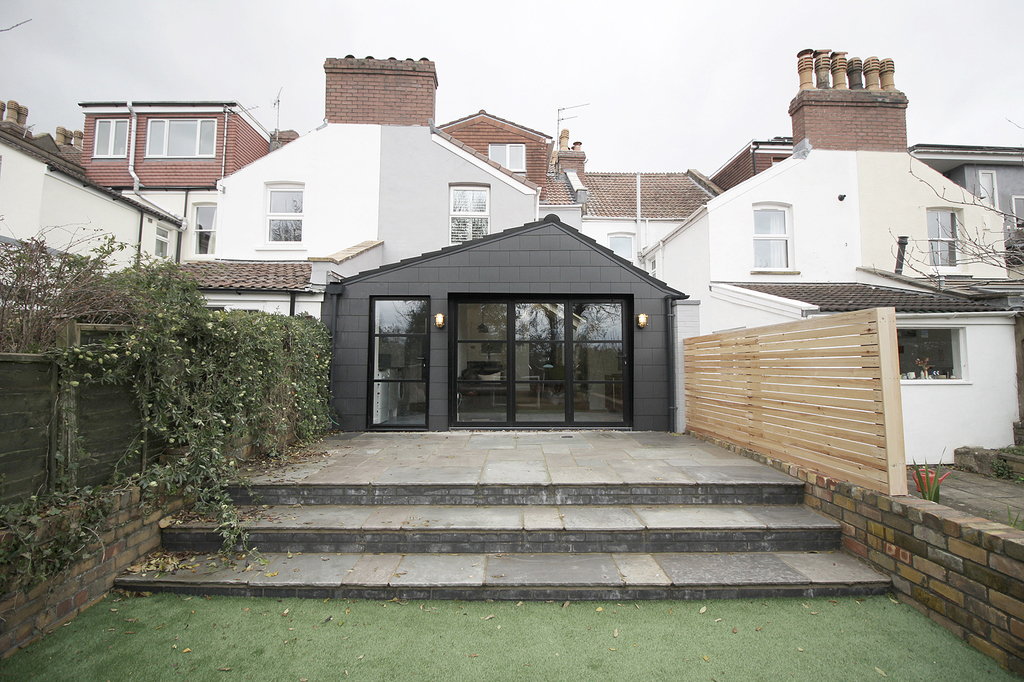Single Storey Extension - Your Guide
Share
Copy Link
A single storey extension can completely transform a home, both on the inside and out. Often used to create a much larger kitchen or open plan family area, there are so many options in terms of style and design.
We see some amazing single storey extensions where the exterior completely changes the look of the original house and looks so beautiful.
We chat all about single storey extensions as well as feature some stunning single storey extension ideas to give you wonderful inspiration.
If you are thinking about a single storey extension in the near future and need some help with where to start with your project, try our renovation advice session.
Renovation Advice Session
What is the cost of a single storey extension?
There are so many factors which impact the cost of a single storey extension including the size, style and location in the country. Our extension cost calculator is the best place to give you an idea of your single storey extension cost.
Extension cost calculator
For tips to save money on your extension, check out our short video below!
What type of single storey extensions are there?
There are three common types of single storey extension:
Side return extension
This is where you knock through to the narrow alleyway to the side of your home, which is normally unused space. By extending sideways, often by only a few feet, you can dramatically increase the width of your home which can have a huge impact on the kitchen. Side return extensions are popular on Victorian and Edwardian homes.
Read Your Guide - Side Return Extensions to find out more.
Rear extension
This is a popular type of extension in the UK, where you extend towards the back of your home. A rear extension can radically change your home and turn a small kitchen into a large open plan area. Rear extensions will differ greatly in style depending on your original property. A terraced home will have a narrower but deeper rear extension whereas a detached property can have a large wide extension.
Wraparound
This combines the side return and the rear extension and will significantly change the size of your home. Wraparound extensions are common on both period properties and modern homes.

A stunning flat roof extension with huge crittall style of doors. From the home of @100yearsinthemaking on Instagram.
Single storey extension roof options
One of the most exciting things about a single storey extension is that you are less restricted on the style of roof as you don't have a second storey above.
- A gabled roof will make the extension feel so much more spacious and look really fabulous from the outside too. Many renovators glaze the gable end to create a striking look and allow additional light to flood into the home.
- A sloping roof towards the original house is popular which will blend in well and also give you more height inside. It's popular to choose the same roof tile as the original home to create a seamless look.
- A flat roof remains a popular option and is normally the most economical option if you are looking to save on cost. To add more to the design feature of a flat roof, popular choices are cladding it in metal or incorporating glazing.

A contemporary single storey extension by Guarnieri Architects
Skylights are a great way to allow more light from above and are a fairly cost effective way to introduce light and can be incorporated into flat, sloping or gabled roofs. Several skylights will allow so much light to flood into your extension and look striking too. Read Your Guide - Skylight Windows to find out more.
Slightly more costly are roof lanterns which create such a stunning look and really add a feature to your home. You can choose a traditional or contemporary roof lantern and they are a great way to add height on a flat roof extension.
We also see some amazing structural glass roofs which are very modern in style and maximise the light coming into your single storey extension. They are really popular on side returns where they allow so much light to flood in whilst looking amazing.

A glazed side return on this extension by Sophie Nguyen Architects
Single storey extension window and door options
The choices of windows and doors for a single storey extension is huge and this is where you can really make an impact, both inside and out.
- Bifolding and sliding doors are such a popular choice on a single storey extension and are a great way to integrate the inside and outside living space. Fitting them flush with the patio and using the same style of flooring throughout will really add to the flow and make the entire space feel seamless.
- Crittall style windows and patio doors are so on trend and create a striking look on both period and modern homes - they look wonderful on both big and small openings too.
- Feature windows are really growing in popularity and work so well as part of a contemporary single storey extension. It's popular to create a window seat on the inside, which adds a wonderful feature and also lets you enjoy the views onto the garden.

Single storey extension with crittall style floor to ceiling glazing by Model Projects
Single storey extension exterior finish ideas
There are so many options for the actual structure of the building too.
- Matching the original brickwork keeps the extension sympathetic to the period and style of the home. This works well if you would like your extension to be within permitted development.
- Rendering a single storey extension is a popular choice, particularly for 1960s and 1970s homes where owners render the original home and new extension to create a seamless look. Rendering only the extension allows it to stand out as a feature on your home.
- Cladding is also very popular for the exterior, with many options from timber cladding, fibre cement painted cladding to ultra modern corten cladding.

Single storey extension with large feature window by Hone Studio Ltd
How long does a single storey extension take to build?
You should allow between 3-4 months for single storey extension, this is assuming that you have things such as planning permissions and party wall act already agreed. This time will allow for the actual build as well as fitting the kitchen, doors and finishes.
A single storey extension can be carried out quicker than this but this is dependent on everything going smoothly and the builders having no delays on other projects, so it's best to allow slightly longer to keep your sanity and manage your own expectations!

Single storey extension with a sloping roof which blends seamlessly with the original home. From the @whitepinesproject on Instagram.
Do I need planning permission for a single storey extension?
Over recent years, the requirements for planning permission for a single storey extension have been relaxed and you can often carry out a single storey extension within permitted development.
Some of the criteria specific for a single storey extension to be permitted development are as follows:
- Single storey extensions cannot extend beyond the rear wall of the original house by more than 4 metres for a detached house or 3 metres for any other house
- If your home is not on designated land (such as a conservation area) or a site of Special Scientific Interest then you can extend up to 8 metres for a detached house and 6 metres for any other house
- Single storey extensions cannot be more than 4 metres in height
Your single storey extension must also satisfy the general extension criteria to be considered permitted development, including the materials must be a similar appearance to the original exterior and only half of the area around the original house can be extended on.

Single storey extension in a conservation area by ADSDF Architects
It's also worth considering that there is a 'prior approval' process for larger single storey rear extensions. If you are planning an extension of over 4 metres and up to 8 metres for a detached house and over 3 metres and up to 6 metres for any other house, you must apply to the local authority. Your local authority will then give notice to your adjoining neighbours and if they object, your local authority will review whether they can go ahead or need to go through planning approval.
There are restrictions on certain types of properties including maisonettes and flats, so you should always check with your local planning authority.
For the full list of requirements for your single storey extension to be considered permitted development, visit the planning portal.
Many renovators do choose to apply for planning permission rather than being restricted with design ideas or size. Working with a local architect who will be able to guide you through the planning permission process and recommend an incredible design for your project.
Even if your single storey extension is within permitted development, it's recommended to obtain a lawful development certificate, which acts as proof that your project did not require planning permission. Although this is not a requirement, it can be handy paperwork to have in the future, particularly when it comes to selling and means there is no ambiguity around your extension.

Single storey extension with a gabled roof looks so stunning. From the home of @thelloyds_homeandgarden on Instagram.
What other regulations or consents do I need to be aware of before carrying out a single storey extension?
There are several other regulations and consents that you should be aware of which are separate to planning permission when you are carrying out a single storey extension.
Building regulations
Building regulations are so important to ensure that your single storey extension meets a minimum standard and will be required when carrying out a single storey extension. Your architect can work with a structural engineer to prepare the technical drawings and calculations to be submitted for building control approval. Read our guide to building regulations if you would like to find out more about the process.
Party Wall Act
The Party Wall Act applies to homes in England and Wales and is a common requirement when you are carrying out a single storey extension, particularly on terraced and semi detached properties. If this does apply to you, then you must serve a Party Wall notice to your neighbour(s). If you need to find out more, read our expert advice article.
Right of Light
Another consideration is your neighbours Right of Light when you are building a single storey extension. This is another regulation that applies in England and Wales, where your neighbour is entitled to an amount of light into their home. If you would like more information on the Right of Light then read our expert advice article.

Stunning single storey extension by Delve Architects
Any other advice before planning a single storey extension?
When you are carrying out a single storey extension, it's worth chatting to your neighbours about your plans and you can help manage any issues that could arise.
A single storey extension is a huge investment so make sure to spend time planning thoroughly and consider the various options in terms of style and design.
Lastly, only work with a builder who has been recommended and you have seen their work. A good builder will make a huge difference to the quality of the project and also your working relationship throughout the build.

Contemporary single storey extension by Cryer & Coe Architects
If you are thinking about a single storey extension in the near future and need some help with where to start with your project, try our renovation advice session.
Renovation Advice Session
Published: February 1, 2023



